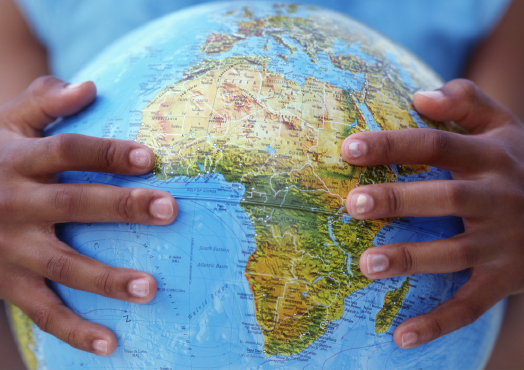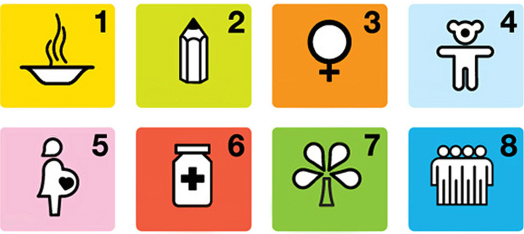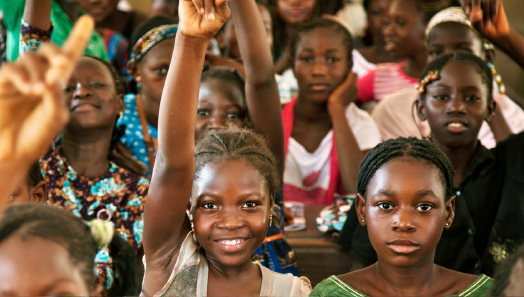
Shooting for a Better Blue Marble
‘Love Song to the Earth’, a tune released recently to spur action on climate change, says ‘Looking down from up on the moon/You're a tiny blue marble/Who would've thought the ground we stand on/Could be so fragile’. ‘The Blue Marble’ is of course that iconic image taken by Apollo 17 in 1972, one that has changed the outlook of an entire generation with the fragile beauty of its subject-matter—planet Earth. If we see the world as a place in which we have a collective stake, as a ‘global village’ so to speak, we need to solve its problems together and decide on a common vision for its development. These were probably among the sentiments that gave rise to the United Nations’ new Sustainable Development Goals and the expiring Millennium Development Goals.
Millennium Development Goals
In September 2000, the leaders of 189 countries gathered at the UN headquarters in New York for the Millennium Summit in an unprecedented move to make globalization ‘fully inclusive and equitable’ by creating a ‘shared future based upon our common humanity in all its diversity’. The summit was the largest-ever gathering of world leaders, and at its conclusion, participants adopted the Millennium Declaration, in which they committed to 8 measurable Millennium Development Goals (MDGs) that would go on to frame their agendas and policies over the next 15 years: (1) Eradicate extreme poverty and hunger; (2) Achieve universal primary education; (3) Promote gender equality and empower women; (4) Reduce child mortality; (5) Improve maternal health; (6) Combating HIV/AIDs, malaria, and other diseases; (7) Ensure environmental sustainability; (8) Develop a global partnership for development.
Further, the affluent G8 agreed in 2005 to provide enough funds to the World Bank, the International Monetary Fund, and the African Development Bank to cancel US$40 to US$55 billion in debt owed by certain heavily indebted poor countries, so that the latter could theoretically rechannel resources to health and education.
Progress made on the MDGs has been uneven across countries, with Brazil meeting many targets, and others, such as Benin, not even close to meeting any. Among the most successful countries were China and India. Nepal, while still South Asia’s poorest country, managed to halve maternal mortality between 1998 and 2006; and Bangladesh registered some of the most impressive improvements in infantile and maternal mortality ever seen.

Sustainable Development Goals
With the MDGs expiring at the end of this year, UN member states committed to a new set of universal initiatives in September 2015. The 17 Sustainable Development Goals (SDGs) build upon the MDGs while endeavouring to redress their inadequacies and imbalance, such as, according to their critics, their failure to consider poverty’s root causes and to address gender inequality, human rights, and other people-centred issues. It has also been pointed out that while the MDGs applied to all countries in theory, in practice, they were really goals for poor countries to achieve, with money from wealthy nations. The SDGs, by contrast, made an effort to set targets that every committed country is expected to work towards.

Wide Consultation
Importantly, unlike the MDGs, the SDGs were formulated after conducting the largest consultation in UN history. An open working group with representatives from 70 countries held a series of meetings and discussions. The UN conducted 11 thematic and 83 national consultations, in addition to surveys—door-to-door as well as an online ‘My World’ survey, asking people to prioritize areas they’d like to see in the goals. Civil society groups, citizens, scientists, intellectuals, and the private sector from around the world were all engaged in these processes. A specialist group is currently working on progress indicators and these are expected to be finalized in March 2016.
SDG Themes
The SDGs take on overarching issues such as making life and livelihoods healthier and more equal, hunger and food security, sustainable sanitation and water security, clean energy, healthy ecosystems, and governance for sustainable societies. The 17 goals are:
|
|
|
|
|
|
|
|
|
|
|
|
|
|
|
|
|
|
|
|
|
|
|
|
|
|
|
Can the Blue Marble really be changed in 17 steps and 15 years? That remains to be seen. Critics that include UK Prime Minister David Cameron and some NGOs, have said that the goals are too numerous and preferred a narrower focus. The SDGs will come into force in January 2016 and will last until 2030.



 Goal 1
Goal 1 Goal 2
Goal 2 Goal 3
Goal 3 Goal 4
Goal 4 Goal 5
Goal 5 Goal 6
Goal 6 Goal 7
Goal 7 Goal 8
Goal 8 Goal 9
Goal 9 Goal 10
Goal 10 Goal 11
Goal 11 Goal 12
Goal 12 Goal 13
Goal 13 Goal 14
Goal 14 Goal 15
Goal 15 Goal 16
Goal 16 Goal 17
Goal 17